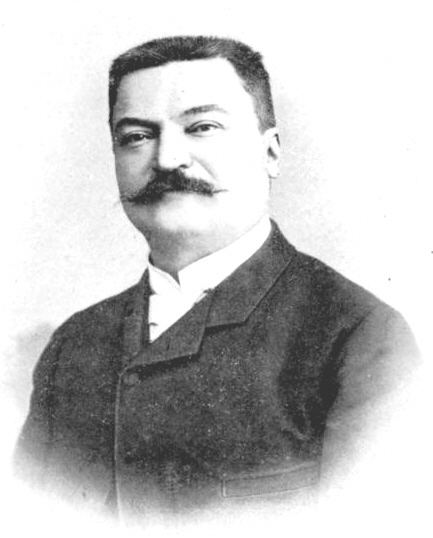Influenced Derrick Henry Lehmer | Role Mathematician Name Edouard Lucas | |
 | ||
Born 4 April 1842Amiens ( 1842-04-04 ) Alma mater Ecole Normale Superieure Known for Lucas sequence, Lucas-Lehmer test, Lucas prime, Gauss-Lucas theorem, Lucas\' theorem | ||
Education Ecole Normale Superieure | ||
Edouard lucas tower of hanoi solved by mitsubishi rv 1a robot
François Édouard Anatole Lucas ([fʁɑ̃swa edwaʁ anatɔl lykɑ]; 4 April 1842 – 3 October 1891) was a French mathematician. Lucas is known for his study of the Fibonacci sequence. The related Lucas sequences and Lucas numbers are named after him.
Contents
- Edouard lucas tower of hanoi solved by mitsubishi rv 1a robot
- Tower of Hanoi 8 disks Only 255 moves requires to solve it
- Biography
- Works
- References
Tower of Hanoi, 8 disks. Only 255 moves requires to solve it.
Biography
Lucas was educated at the École Normale Supérieure. He worked in the Paris observatory and later became a professor of mathematics in Paris. In the meantime he served in the army.
In 1875, Lucas posed a challenge to prove that the only solution of the Diophantine equation:
with N > 1 is when N = 24 and M = 70. This is known as the cannonball problem, since it can be visualized as the problem of taking a square arrangement of cannonballs on the ground and building a square pyramid out of them. It was not until 1918 that a proof (using elliptic functions) was found for this remarkable fact, which has relevance to the bosonic string theory in 26 dimensions. More recently, elementary proofs have been published.
He devised methods for testing the primality of numbers. In 1857, at age 15, Lucas began testing the primality of 2127 − 1 by hand, using Lucas Sequences. In 1876, after 19 years of testing, he finally proved that 2127 − 1 was prime; this would remain the largest known Mersenne prime for three-quarters of a century. This may stand forever as the largest prime number proven by hand. Later Derrick Henry Lehmer refined Lucas' primality tests and obtained the Lucas–Lehmer primality test.
He worked on the development of the umbral calculus.
Lucas was also interested in recreational mathematics. He found an elegant binary solution to the Baguenaudier puzzle. He also invented the Tower of Hanoi puzzle, which he marketed under the nickname N. Claus de Siam, an anagram of Lucas d'Amiens, and published for the first time a description of the Dots and Boxes game in 1889.
Lucas died in unusual circumstances. At the banquet of the annual congress of the Association française pour l'avancement des sciences, a waiter dropped some crockery and a piece of broken plate cut Lucas on the cheek. He died a few days later of a severe skin inflammation probably caused by septicemia. He was only 49 years old.
